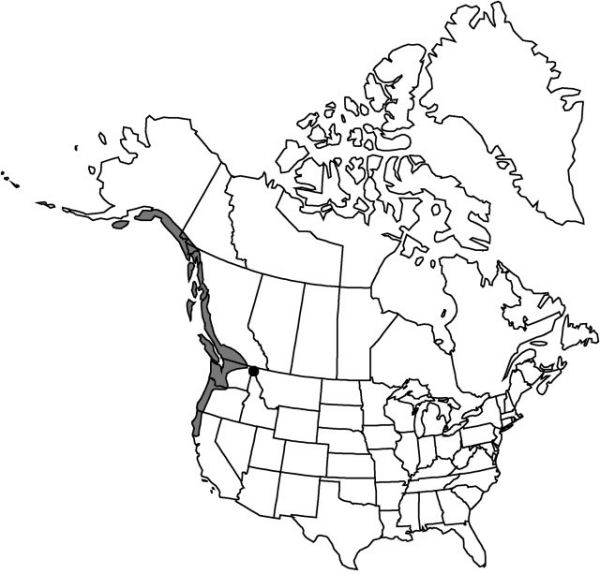Difference between revisions of "Maianthemum dilatatum"
Bot. Gaz. 61: 30. 1916.
FNA>Volume Importer |
FNA>Volume Importer |
(No difference)
| |
Revision as of 21:41, 16 December 2019
Plants terrestrial, 20–45 cm. Rhizomes sympodial, proliferatively branching, units 8–20 cm × 1–1.5 mm, roots restricted to nodes. Stems erect, 1.5–3.5 dm × 2–4 mm. Leaves solitary on sterile shoots, 2–3 on fertile shoots, petiolate; blade cordate, 6–10 × 5–8 cm; base lobed, with deep sinus; apex sharply acute; proximal leaves short-petiolate, blade triangular to cordate, petiole 4–7 cm; distal leaves petiolate, blade deeply cordate, petiole 7–10 cm. Inflorescences racemose, complex, 15–40-flowered. Flowers (1–)3(–4) per node, 2-merous; tepals conspicuous, 2–3.2 × 1.5 mm; filaments 1.5 mm; anthers 0.2–0.4 mm; ovary globose, 0.8–1 mm wide; style 0.4–0.5 mm; stigma distinctly 2-lobed; pedicel 3–5 × 0.2–0.4 mm. Berries green mottled with red when young, maturing to deep translucent red, globose, 4–6 mm diam. Seeds 1–2, globose, 2–3 mm. 2n = 36.
Phenology: Flowering early spring.
Habitat: Abundant in coniferous and deciduous forests, especially in forest margins
Elevation: 0–800 m
Distribution

B.C., Yukon, Alaska, Calif., Idaho, Oreg., Wash., Asia (Kamtchatka peninsula in e Russia to Japan).
Discussion
Variation in the gross morphology, karyology, and ecology of the North American populations has been documented (S. Kawano et al. 1971) and compared with that of disjunct populations in Japan (S. Kawano et al. 1968b).
Selected References
None.